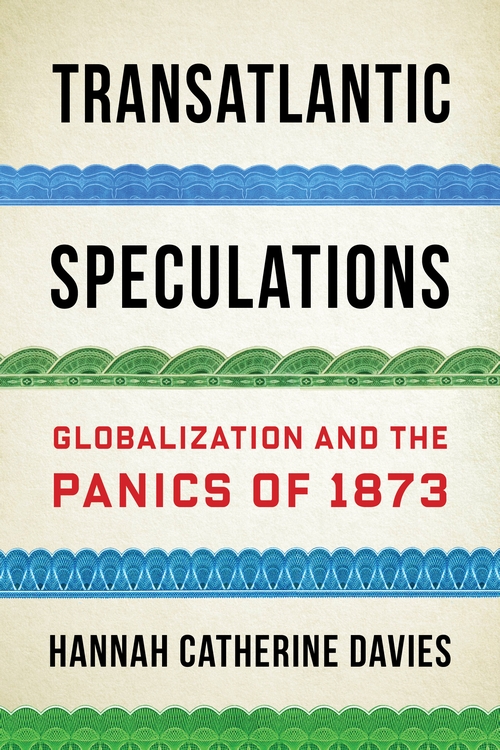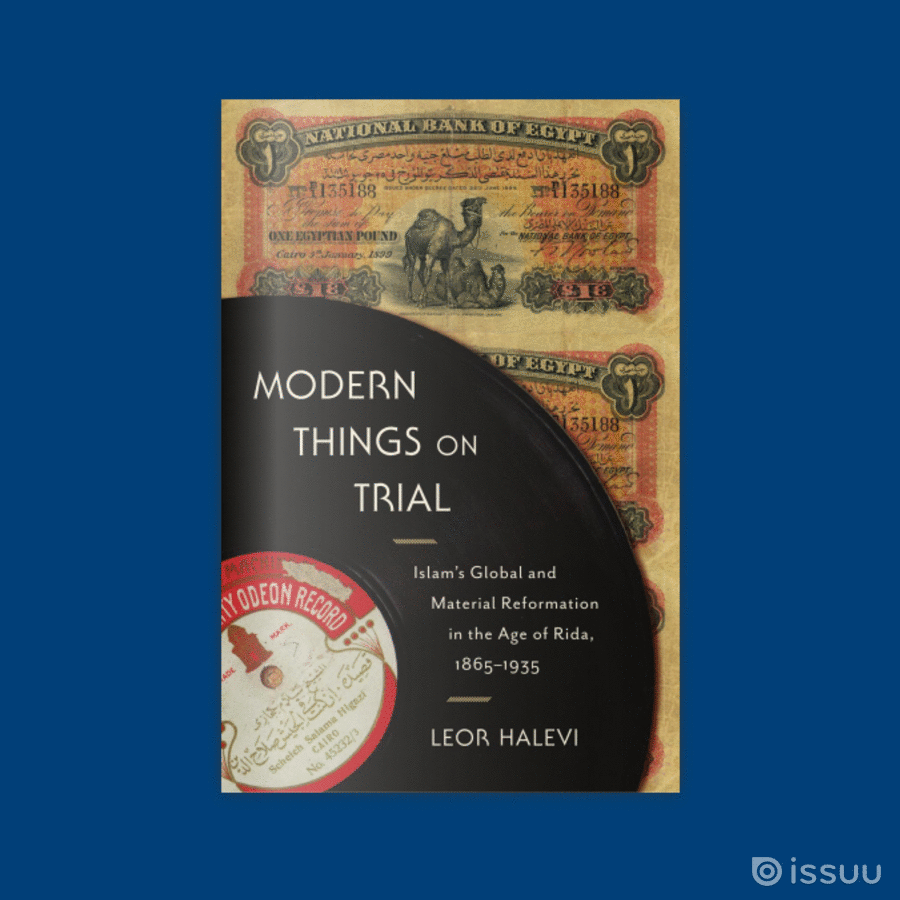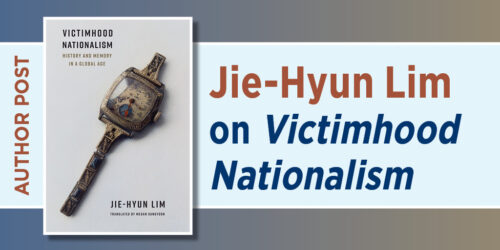Q&A: Leor Halevi on Modern Things on Trial

“This nuanced, meticulously researched, yet accessible study illuminates how significant early-twentieth-century debates on Islamic law often revolved around some surprisingly ordinary objects and how local anxieties and input shaped a reformist Islam with transregional appeal. Halevi’s focus on the material dimensions of modern Islamic thought adds a very welcome and promising dimension to the scholarship in this field.”
~ Muhammad Qasim Zaman, author of Islam in Pakistan: A History
Modern Things on Trial: Islam’s Global and Material Reformation in the Age of Rida, 1865–1935, by Leor Halevi Leor tells the story of the Islamic trials of technological and commercial innovations of the late nineteenth and early twentieth centuries The introduction of the gramophone, phonograph, and other goods sparked great changes in Islamic communities. Halevi discusses some of these changes and shares answers to some of the most asked questions in this Q&A.
Enter this week’s book giveaway for a chance to win a copy of Modern Things on Trial!
• • • • • •
Q: You argue in Modern Things on Trial that imperial Muslim responses to European innovations had little to do with Islamic views of the West. Explain.
Leor Halevi: There has long been a tendency to see Islam in opposition to modern technology and Western culture. My book traces this view to the Napoleonic invasion of Egypt, which gave rise to an academic discourse about the phlegmatic temperament of the country’s ʿulamā’ following the disappointing flight of a French invention, the hot air balloon. When I began researching fatwas about modern technologies and commodities, I expected to find Muslim scholars reflecting on distinctions between Islam and the West. To my surprise, I found little of that in the late nineteenth and early twentieth centuries—mainly in the nationalistic interwar discourse about new Western fashions. The ʿulamā’ did reflect frequently and deeply about new objects that were made abroad, but they rarely represented these objects as foreign. They recognized that early adopters who identified as Muslim already owned them.
Q: If the goods’ origin in Europe or North America was not the main issue, then what was? Why were these goods objects of religious controversy?
LH: The fundamental goal of legal and theological reflection was to figure out how Muslims should interact with new products and technologies that challenged in some respect Islamic norms. There wasn’t really one single issue to resolve; there were multiple. The issues that gained traction were quite specific, rather technical, and deeply connected to the Islamic legal tradition. Consider telegraphs and phonographs. Muslim intellectuals wasted little time on the general or vague question about these instruments’ lawfulness. Instead, they discussed at length more specific questions. They wanted to figure out how Muslim worshippers should relate to the phonograph when it played records of the Qur’an. Similarly, they wanted to determine how Muslim subjects in an empire’s peripheries should relate to the telegraph when it was used by metropolitan authorities to communicate the timing of the communal feast at the end of the fast of Ramadan. In both of these cases, new religious practices were the central concern.
Q: But weren’t the ʿulama’ troubled by secular uses of these instruments as well?
LH: It really depends on the instrument on trial. The telegraph was used extensively for commercial communications, and this didn’t bother the ʿulama’ at all. Social conservatives were offended by the phonograph’s secular uses—not so much by the playing of profane songs, incidentally, but by the intermingling of men and women in musical soirées.
Q: Material objects have received little attention in Islamic studies. Why is that? And how does your book contribute to the study of religion and materiality?
LH: Religious studies scholars have argued that the field has generally neglected religion’s material dimensions due to a Protestant focus on the interiority of faith. I am not sure that this is the reason for the disregard of material objects in Islamic studies, however. There has long been a bias against material evidence as well as a bias in favor of abstraction in Islamic jurisprudence. Legal and intellectual histories tend to dwell on jurisprudential theories and principles, so they reflect these biases. But Islamic theories and principles did not arise in a material vacuum, and I feel that it is essential for historians to try to recover the material context behind them. I definitely consider material objects as key sources of Islamic law. Let me give you an example. In Modern Things on Trial, I show how national banknotes drove juridical discussions about usury and almsgiving in the early twentieth century: a new currency, paper money, made it impossible to apply classical Islamic laws that had been designed to deal with silver and gold coins. This was the material stimulus that sparked religious and legal reflection.
Q: Rashid Rida, the Muslim authority whose name appears in your book’s subtitle, is a famous and influential Islamic reformer. Some speak of him as a progressive thinker; others speak of him as a fundamentalist. You refer to his age in relation to “Islam’s Global and Material Reformation.” What’s your view of his historical role?
LH: Although he presented himself as a religious reformer, I don’t argue that Rida gave rise to an Islamic reformation. My contention is that new material practices reformed how Muslims understood Islamic beliefs and rituals in imperial cities all over the world. I argue that controversial entanglements with new technologies and commodities were the driving force behind a process of religious change that Rida had no power to control. This is a revisionist argument that challenges long-held views of the intellectual movement of Islamic reform. Instead of focusing on the historic role of famous Muslim scholars such as al-Afghani, ‘Abduh, and Rida, my book focuses on the historic role of modern innovations and pious consumers.
In the book, I describe Rida as a responsive religious reformer and as the entrepreneur behind al-Manar, The Lighthouse Press, history’s first successful Islamic publishing business. I demonstrate that he usually gave the readers of his signature magazine, al-Manar, what they wanted: authoritative interpretations of Islamic law known as fatwas that supported their side in local battles over the future of Islam. He printed the first issue of this magazine in 1898, shortly after he migrated to Egypt from Syria, and the last in 1935, the year of his death. He succeeded in publishing this for-profit, subscription-based magazine for decades because he responded effectively to readers’ interests and demands. He did this by representing Islam in its original form as a laissez-faire religion that easily accommodated believers’ needs and wants. He argued that openness to worldly advantages was the secret behind the prosperity of the earliest generations of Muslims and that modern Muslims would prosper, too, if they returned to Islam’s foundational spirit.
Q: Where did his journal circulate? Mainly in Egypt or throughout the Middle East and beyond?
LH: Fatwa requests allowed me to map his correspondence with subscribers within Egypt and abroad. I discovered some unexpected patterns and trends. Before World War I, al-Manar circulated principally within the British Empire. I found, to my surprise, that Rida corresponded more frequently with fatwa seekers from Singapore, a British Strait Settlement, than from his homeland, Syria under Ottoman rule. After World War I, as a prominent Syrian nationalist leader in exile, Rida began to correspond much more with fellow Syrians. And they wrote to him not only from Greater Syria but also from the Syrian diaspora in Latin America. His legal communications with fatwa seekers overseas is actually a major theme of the book, which covers his correspondence with Arabic readers from Russia, India, China, and many other countries.
Explore more books in Islamic studies, and save 30% when you order from our website by using coupon code: CUP30 at checkout!




